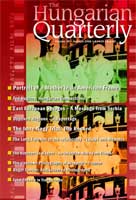
Shifting Aims, Moving Targets: On the Anthropology of Religion
Promena ciljeva, pomeranje meta: o antropologiji religije
Keywords: anthropologist; anthropology of religion; totem; taboo; religion; ritual; believer;
More...
Keywords: anthropologist; anthropology of religion; totem; taboo; religion; ritual; believer;
More...

Keywords: Clifford Geertz; anthropology; social relations; religion; research; Emil Durkheim;
More...
Keywords: Clifford Geertz; thick description; thin description; theory of culture;
More...
Keywords: anthropology; ethnography; author; anthropology;
More...
Keywords: fear; relativism; antirelativism; cultural relativism;
More...




Keywords: review; kolarova; revolt; subcultures; music
Review of a book Marta Kolářová (ed.): Revolta stylem. Hudební subkultury mládeže v České republice. Praha, Slon + Sociologický ústav AV ČR, 273 s.
More...Keywords: Roma; Ethnic extremism; Czech Republic
This article analyses the concept of Roma extremism and its relation to the Czech Republic. Various approaches to ethnic extremism are described. The risk tendencies in the context of historical development and contemporary situation are identified, including hate crimes committed by Roma or cooperation of Roma ethnic organizations with left-wing extremist groups. However, author comes to conclusion that consistent Roma extremism is not part of the Czech political spectrum (in the future could be the establishing of this form of extremism possible).
More...Keywords: populism; political parties; anti-establishment appeal; people; identitary and partially populist parties
Populists, anti-establishment parties, outsiders? Some comments on conceptualization of populist political parties. The rise and electoral success of populist political parties has been reflected in the growing number of academic studies devoted to populism and populist political parties. However, there is still lack of widely-accepted definition of the term populism and political parties using the populist appeal are usually labelled as anti-establishment political parties, protest parties or outsiders. Moreover, populism and demagogy are often incorrectly used interchangeably. By providing an overview of relevant approaches to research on populism and populist political parties, the authors focus on so-called analytical core of populism which serves as a starting point for distinguishing between two basic types of populist political parties: identitary and partially populist parties. The main difference between the two types of parties lies in the relevance of the ideology in the profile of a populist party.
More...Keywords: far-right; political parties; Spain; neofascism; neonazism; populist radical right
The article deals with the Spanish far-right scene in the era of 1995–2012. The aim of the case study is to describe the contemporary far-right political parties in Spain from the viewpoint of their ideology and political actvities (election results, demonstrations etc.). These should provide data for the subsequent classification of the included parties in different streams according to their basic shared ideological features.
More...Keywords: review; extremism; chmelik
Review of a book Chmelík, J. et al. Extremismus. Plzeň: Vydavatelství a nakladatelství Aleš Čeněk, 2012. 425 p.
More...
A mid the gradual modernisation of post-1867 Hungarian society, the aristocracy was considered to be the closest embodiment of the “historical”, being seen (by the lower and rising middle classes, and even the aristocracy itself) as a social stratum which owed its continued existence to a system of traditions and privileges dating back to the Middle Ages. Bearing one of the titles of the higher nobility was, originally, the sine qua non condition of being a member of the aristocracy. (In Hungary, as in most other countries of Europe, differentiations of status were developed over the centuries according to a ranking system.) There were three traditional aristocratic titles. The most junior in respect of the prestige and influence that went with it was that of baron. This was followed by count; and prince ranked the highest. From time to time, the use of a foreign aristocratic title was allowed in Hungary, as in the case of the Pallavicini family, who were marquesses. The title of archduke was reserved for members of the ruling Habsburg-Lotharingian dynasty. There were three main ways of becoming a member of the Hungarian aristocracy. The primary way was through heredity: a peerage awarded one’s ancestor by a King of Hungary was inherited by all descendants.[...]
More...
Letters of Ted Hughes, Selected and edited by Christopher Reid, London, Faber and Faber, 2007, 756 pp. Ted Hughes: Selected Translations, edited by Daniel Weissbort, London, Faber and Faber, 2006, 232 pp.
More...
